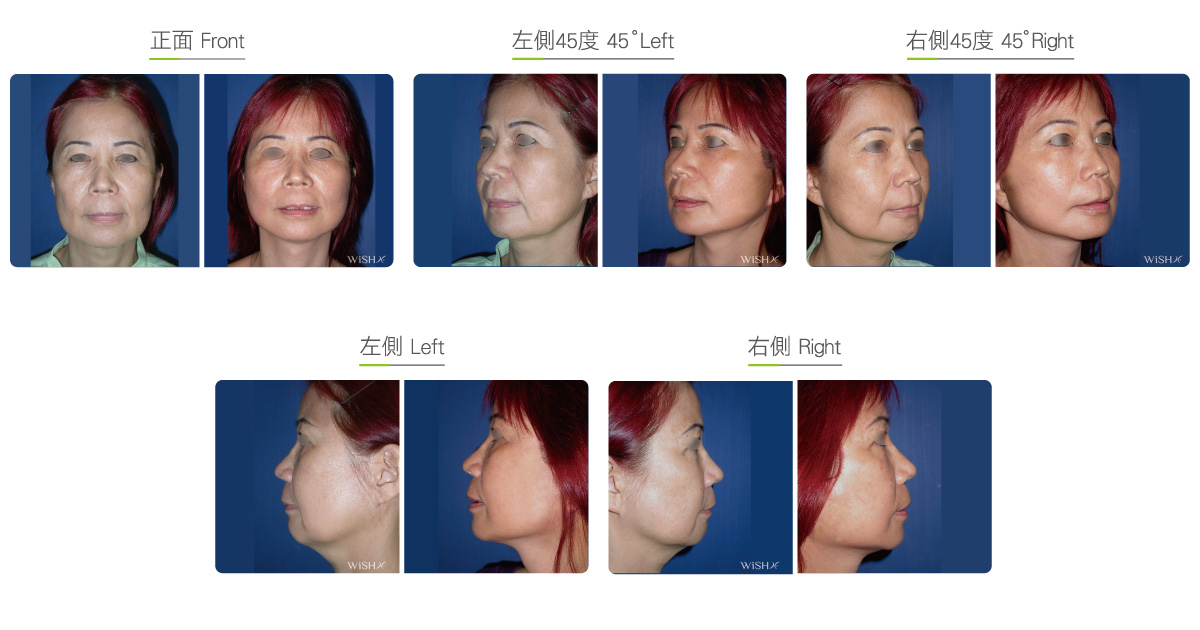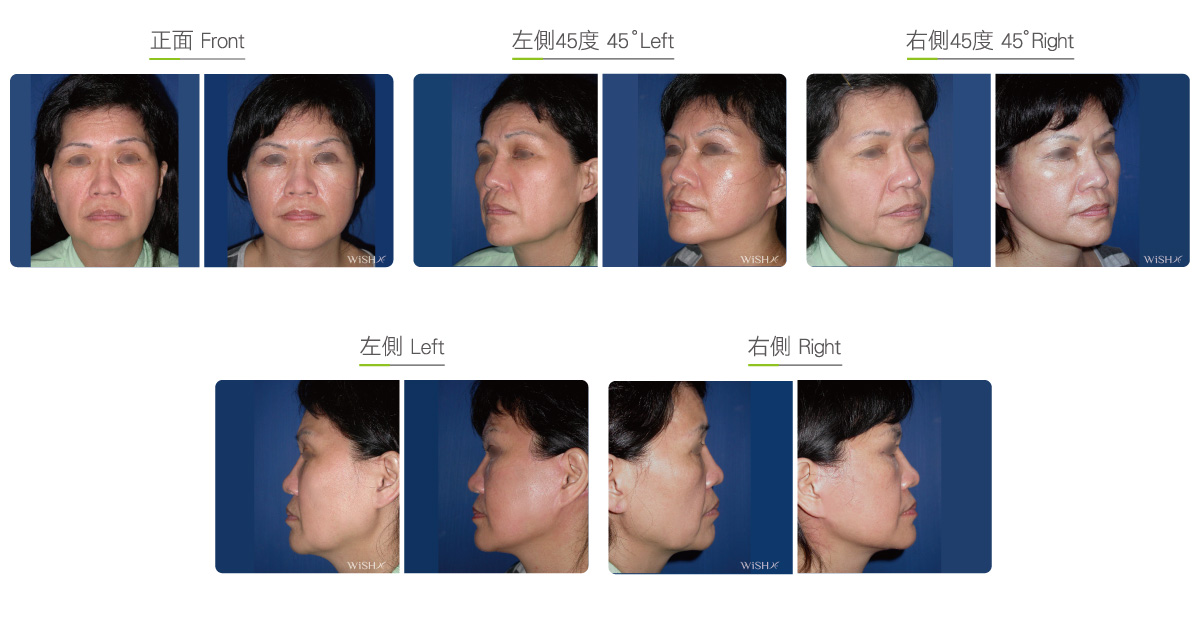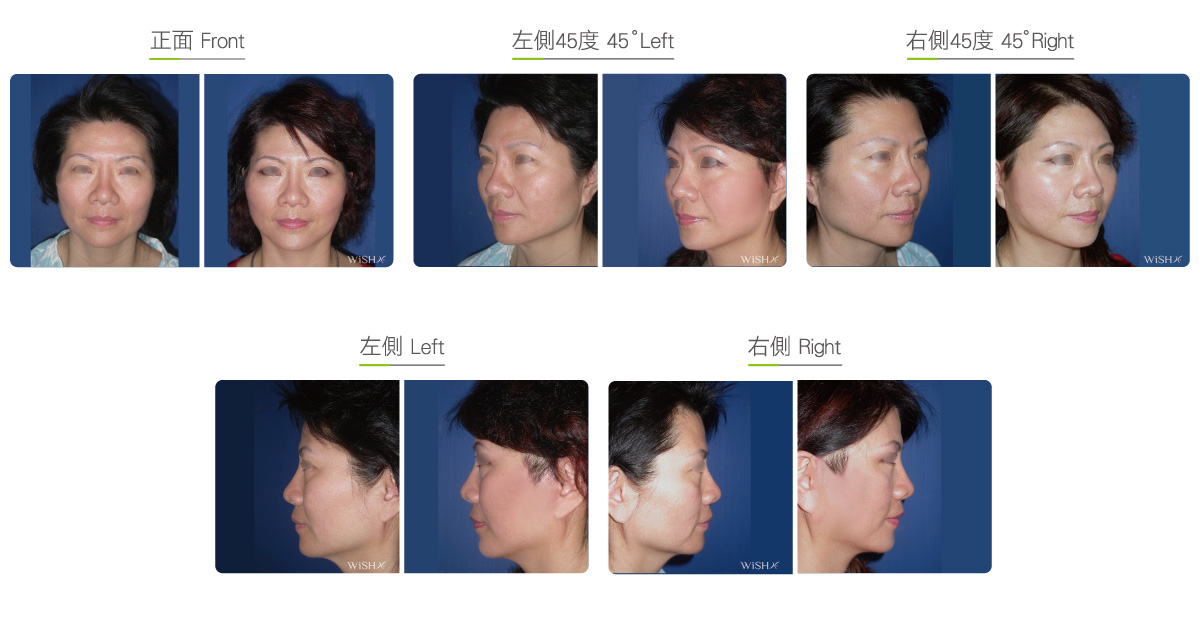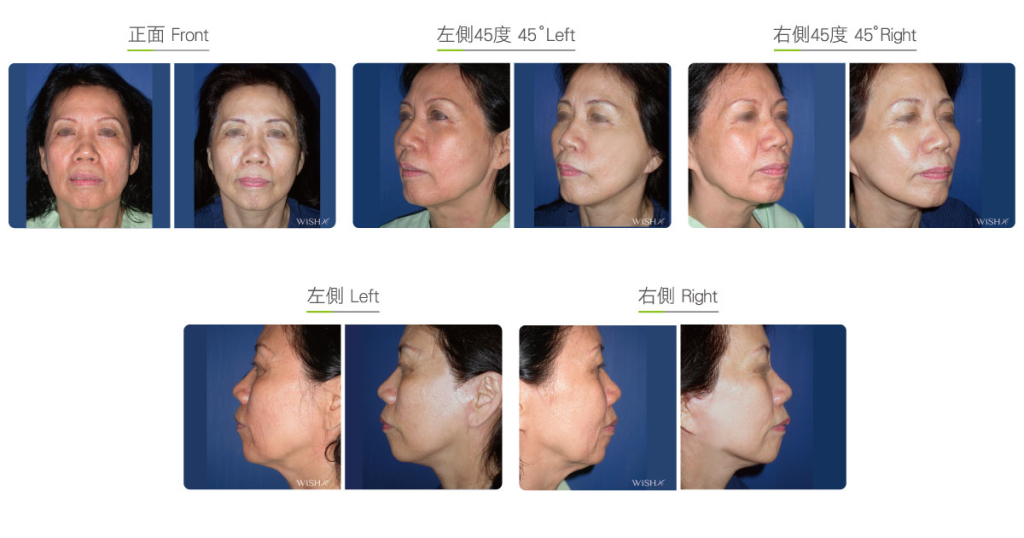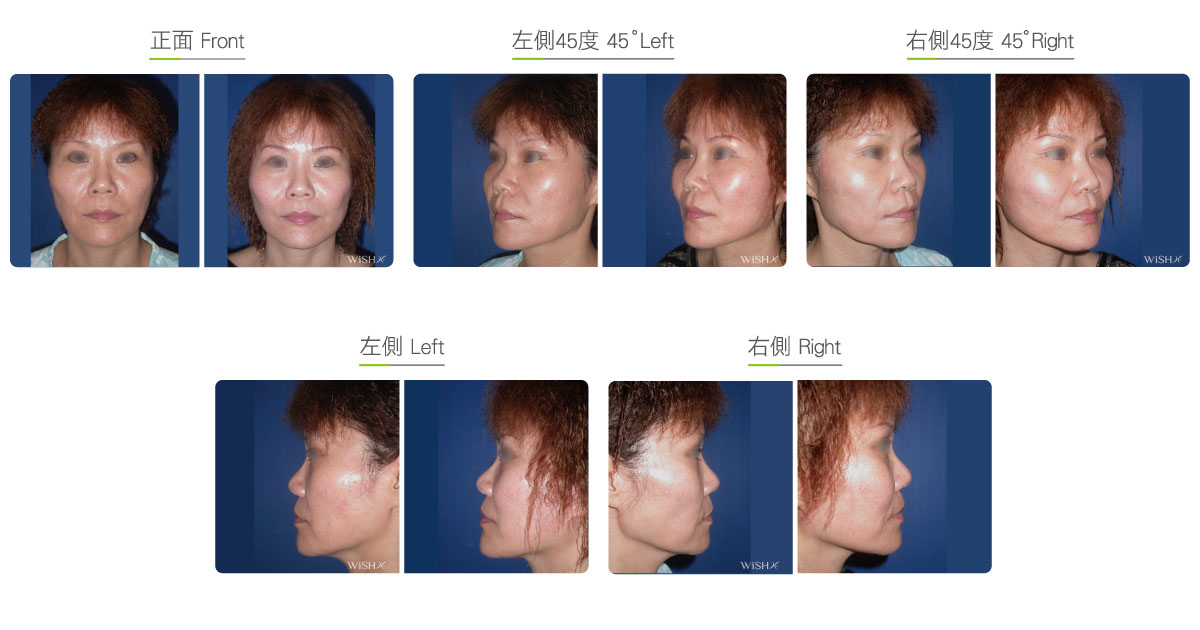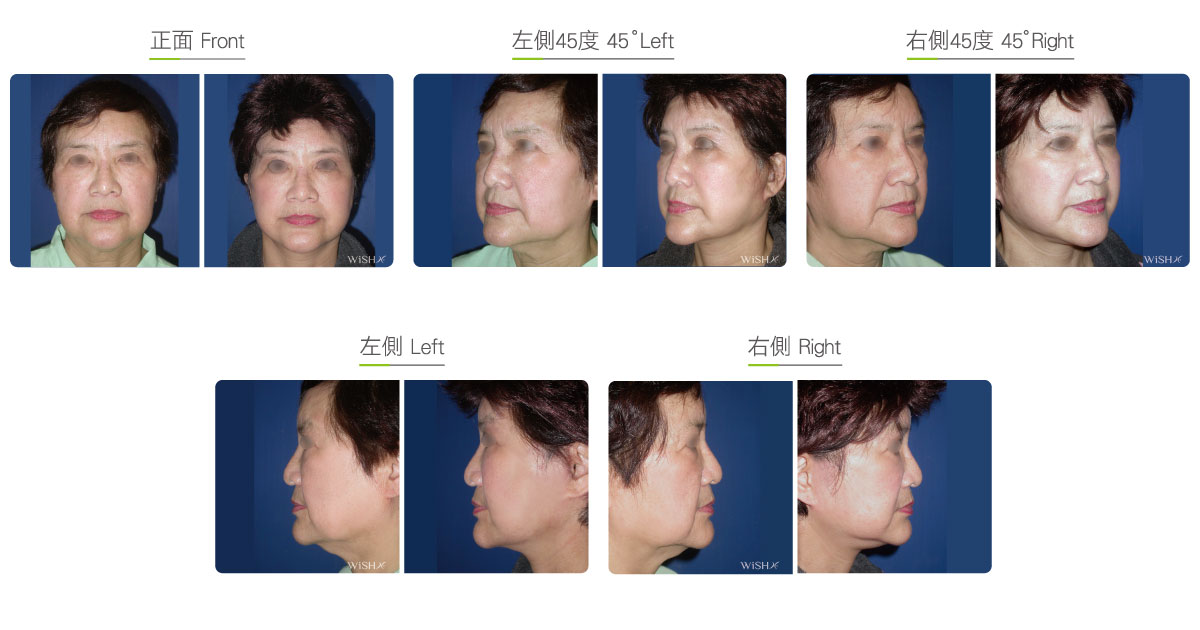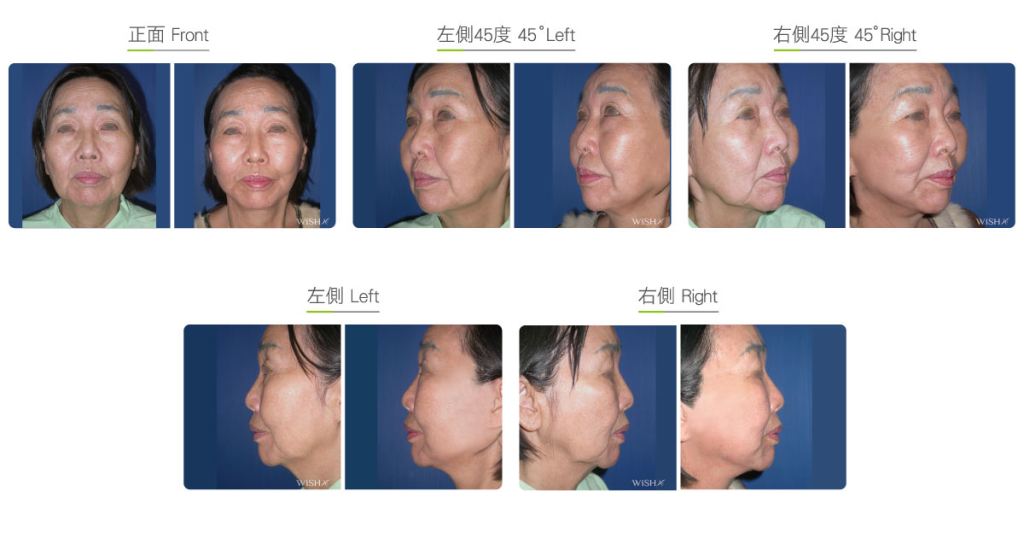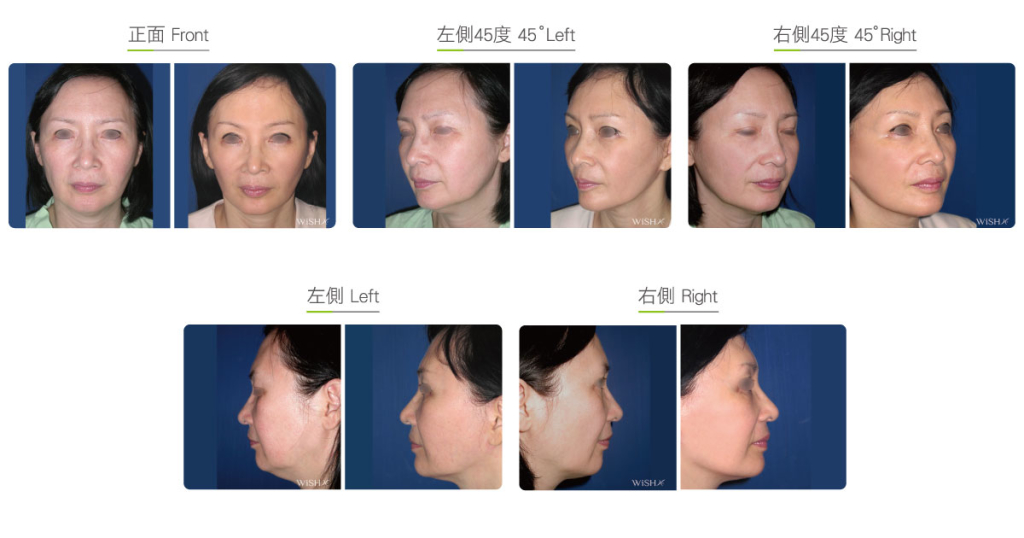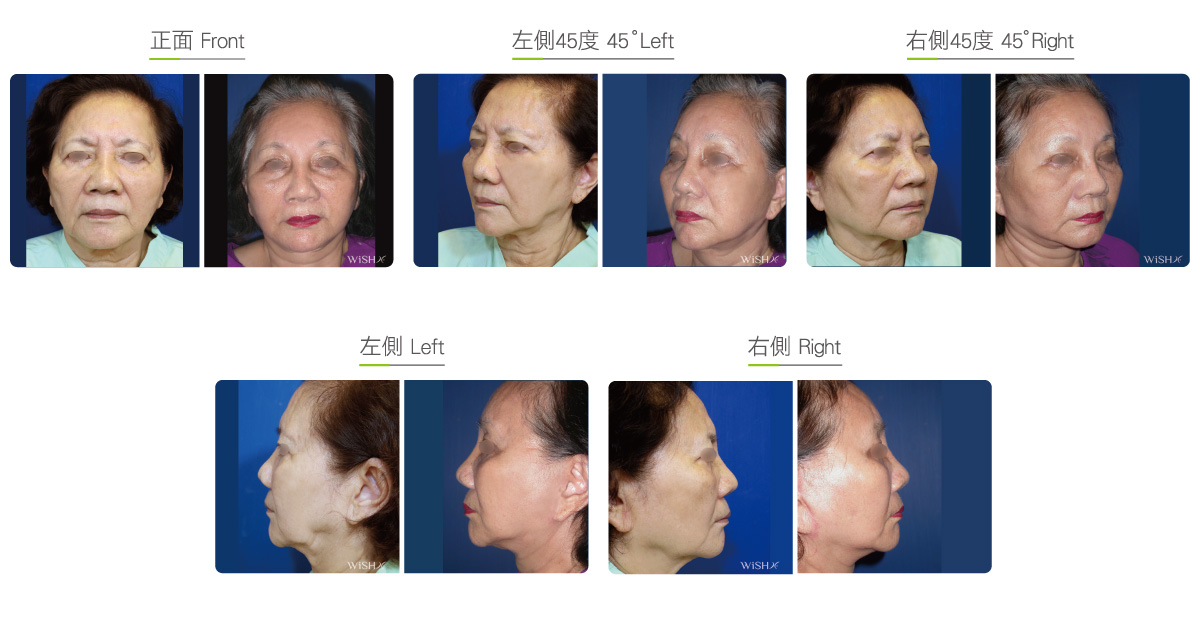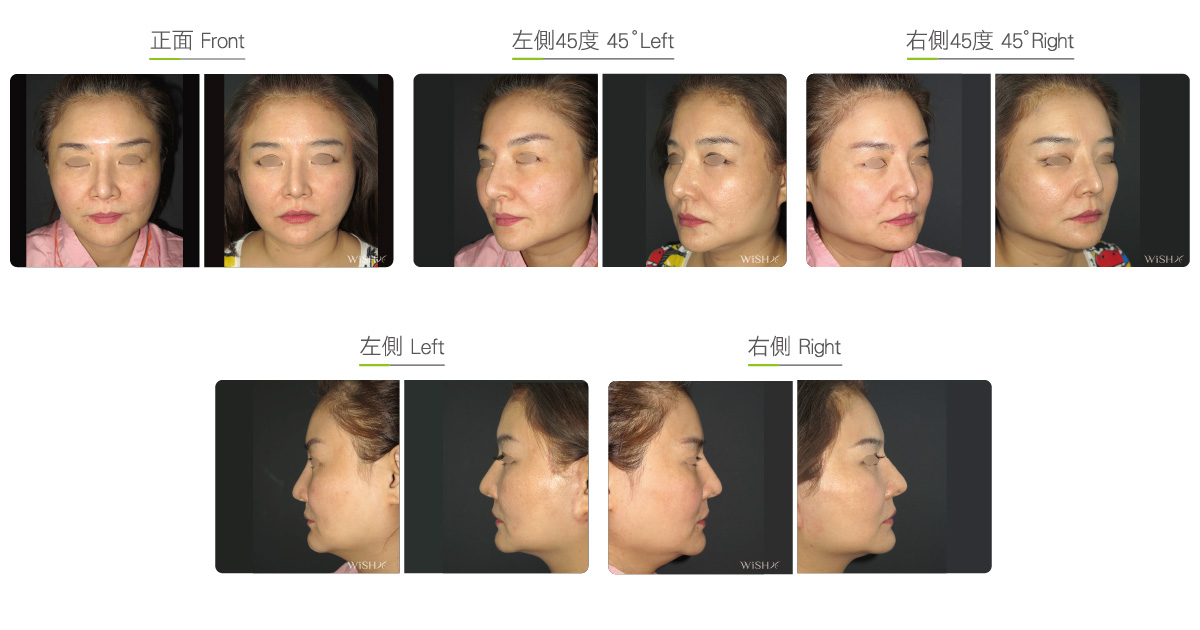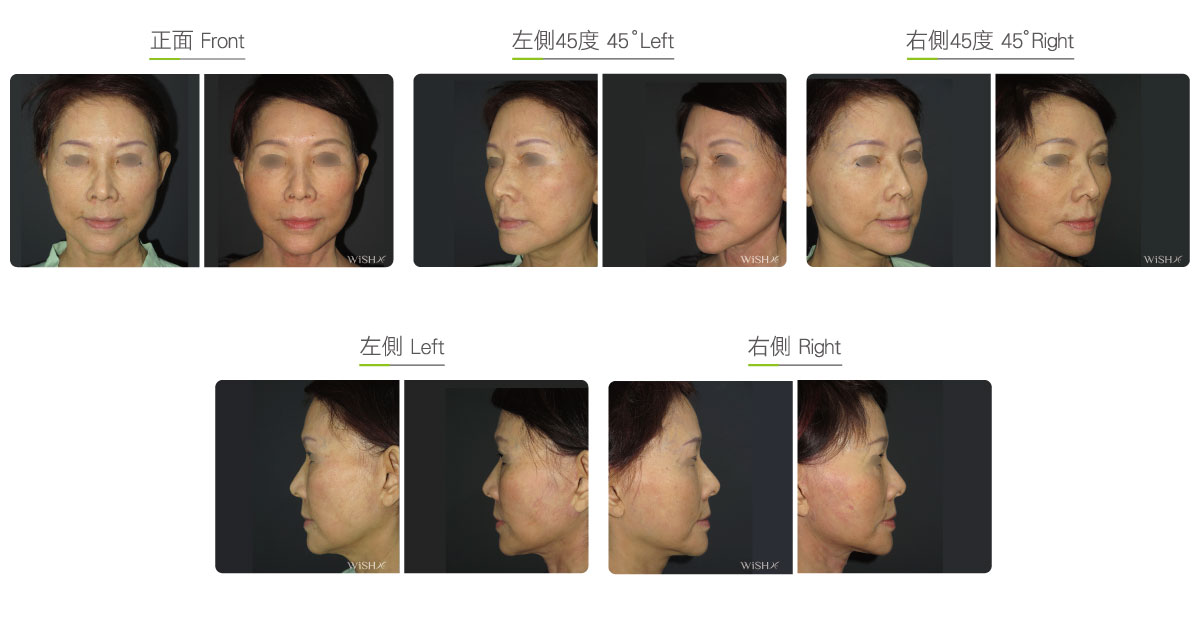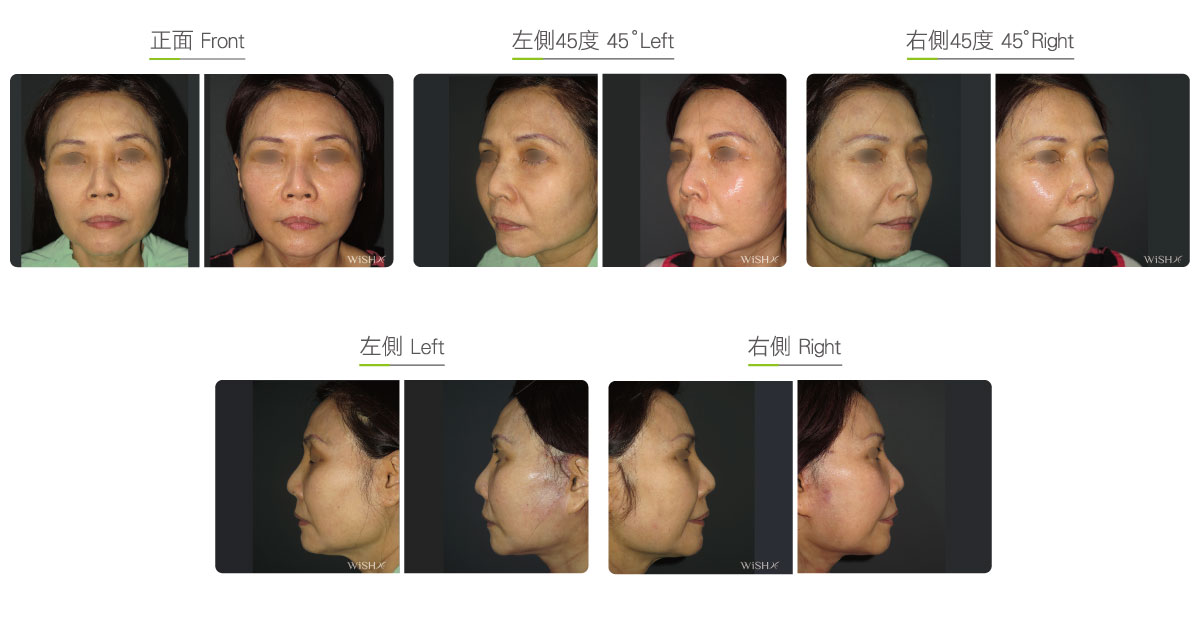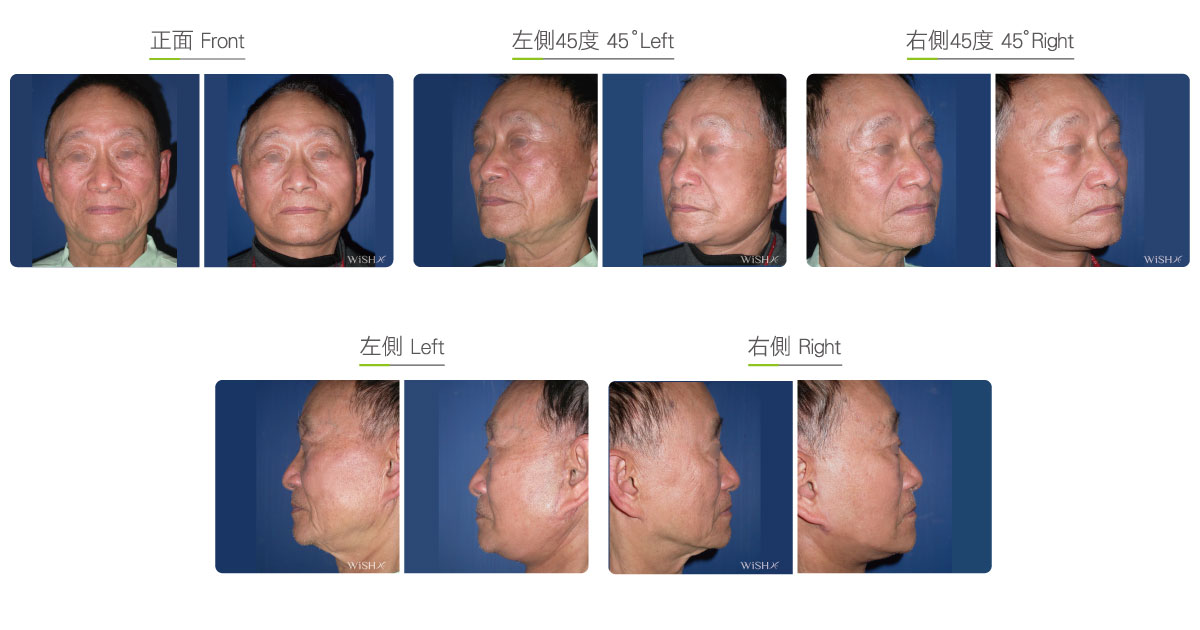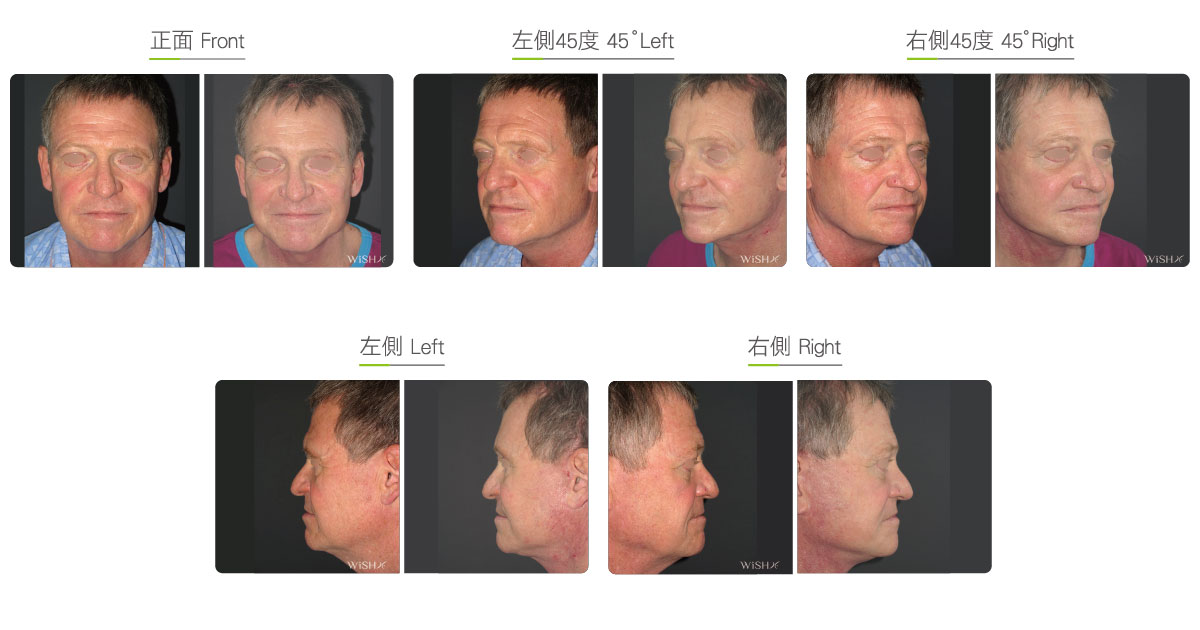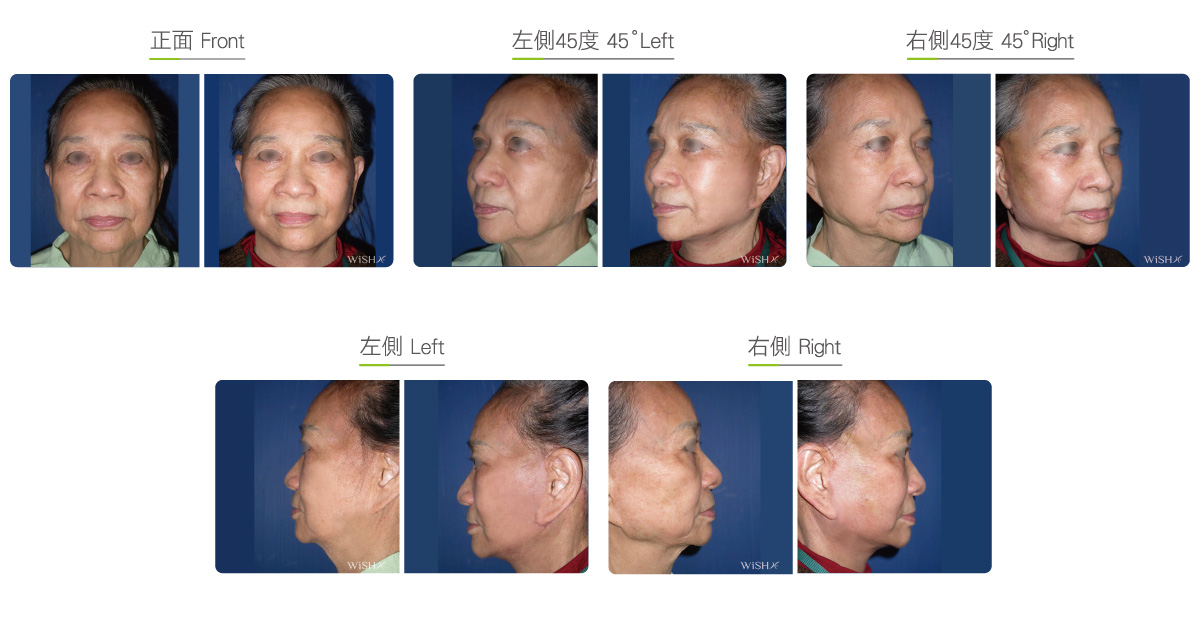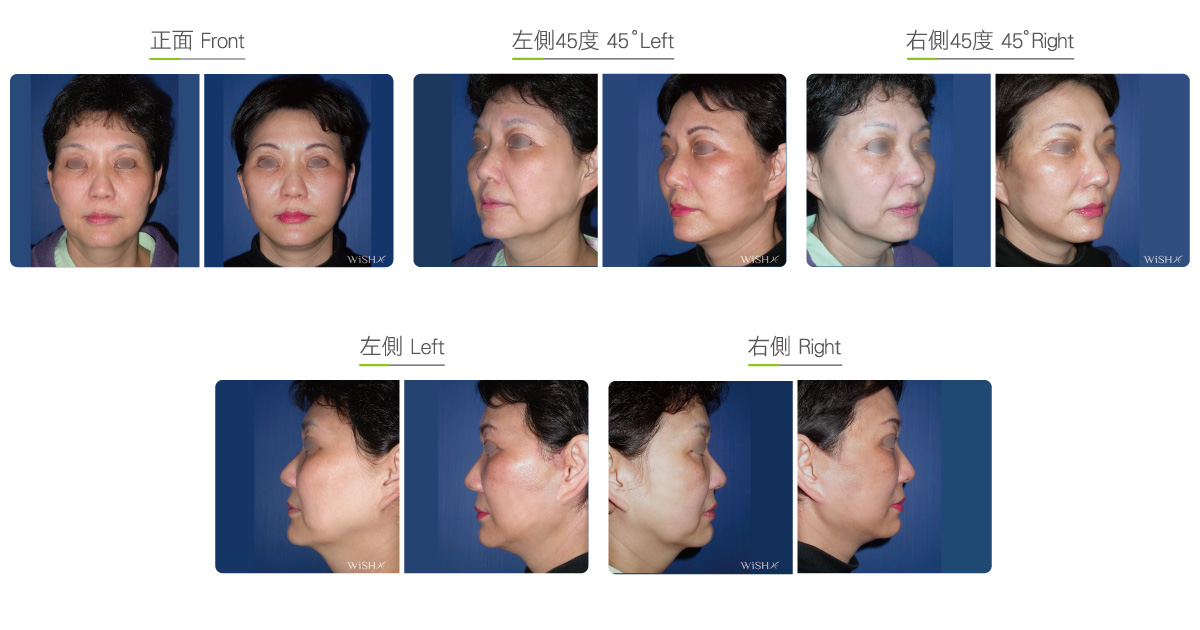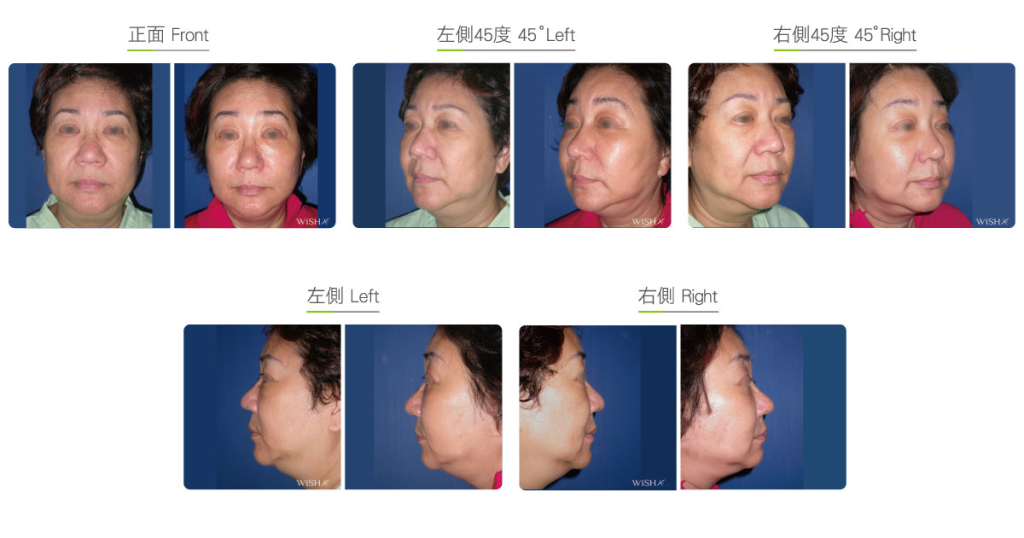Deep Plane SMAS Facelift
Deep plane superficial musculoaponeurotic system (SMAS) facelift is a traditional facial and neck lift surgery and currently acknowledged as the most effective and long-lasting approach. SMAS means that the surgery involves the muscle (deep) and fascia (superficial), which underpins deep plane facelift. This surgery extends from the scalp downward along the skin in front of the ear and then around the earlobes to the occipital hairline. It can produce a lift in the eyebrow tail, midface, nasolabial wrinkles, lateral cheeks, lower face, jawline, and neck skin. In other words, in addition to forehead laxity, the aging and drooping of other parts of the face will all be alleviated by the surgery whose effects are also most comprehensive and persistent. It is appropriate for patients in their 50s and 60s who already have obvious laxity or sagging.
This surgery is performed by making a long incision from the scalp to the skin in front of the ear and then around the earlobes to the retroauricular hairline margin. Dr. Chuang will first detach the preauricular skin and subcutaneous fat layer to fully expose the subcutaneous fascia and then continue separation along this layer to the anterior nasolabial folds till the lateral border of the cheekbone. Next, the superficial fascia adjacent to the ear is dissected or partially excised, and via the area, will penetrate below the superficial fascia for a secondary dissection between the superficial fascia and deep myofascial layer. Dissection at this plane should be carefully conducted, ending approximately 1.5–2 cm lateral to the nasolabial folds to avoid injury to the fragile facial nerve branches. After the complete separation of the deep myofascia and superficial fascia, Dr. Chuang lifts the superficial fascia in the posterosuperior direction (45°). Meanwhile, the marionette line and nasolabial folds are also effectively lifted. Then, the superficial (SMAS) fascia should be partially resected and fixed to the pre- and retro-auricular deep fascia. Finally, the excess or loose facial skin is properly resected and sutured. If necessary, concurrent neck lift could be conducted in combination with this surgery.
This surgery is a relatively complex and exquisite deep composite facelift rather than a simple facial skin rescission or other conventional facelifts. It requires deep plane myofascial separation, superficial fascial suspension, rescission and fixation, and facial skin excision and suturing; thus, the effects last the longest among all facelifts, averaging 8–10 years. This multi-layer facelift will not affect facial expression or muscle motion, and most patients rapidly recover, with the expected natural appearance after the surgery. Nevertheless, because this surgery entails a relatively wide and extensive dissection, the period of swelling and recovery is long and the scars will also take time to fade (at least 6 months). For quicker recovery, a fibrin adhesive can be used to assist skin adhesion, which may reduce the swelling and recovery period by at least 50% and effectively avoid a complication of hematoma.
Surgical conditions
Duration
- Type of anesthesia: IV sedation or general anesthesia
- Type of incision: A long incision at the scalp above the temple, extending along the preauricular skin to the retroauricular hairline
- Recovery: 7–10 days
- Removal of sutures: 10–14 days
General instructions
No food and water on the day of surgery
Anticoagulants, if any, should be suspended for 1 week.
- Rubbing or pressing of the forehead and scalp incisions should be avoided for 1 month postoperatively.
- Smoking, alcohol consumption, or irritating food should be avoided for 1 month postoperatively.
- Scar care should be continued for 3 months postoperatively.
- Rigorous exercise of the neck should be avoided for 3 months postoperatively.
Ideal candidates
- Aging patients with obvious facial sagging problem.
- Patients with combined midface, lower face, and neck skin laxity or drooping.
- Patients with deep nasolabial folds or pre-jowl sulcus (marionette line), which are not solved by other facelifts.
- Patients already receiving other facelifts but showing indistinctive effects.
- Patients already undergoing Ulthera or Thermage therapy but showing no obvious effects.
- Patients with excessive cheek excessive laxity due to the drastic reduction of body weight.
- Patients pursuing optimal and lasting firm skin effect.
Potential complications
- Scar hypertrophy
- Temporary skin stiffness or numbness
- Facial nerve injury (temporary in most cases)
- Hematoma
- Poor wound healing
Surgical advantages
-
The surgical range is extensive, and the tightening effect is most significant.
-
The results are very stable and long lasting (average 8–10 years).
-
Simultaneously solves eyebrow-tail, midface cheek, nasolabial fold, marionette wrinkle, jawline, and sagging neck skin.
-
Able to effectively lift the jawline and neck angle as well as make the face slim.
-
Deep plane facelift will not affect facial expression but present natural results.
-
Skin elasticity and luster will also be improved.
Surgical drawbacks
-
The surgery is time consuming, and the postoperative recovery is relatively slow.
-
Scars are exposed on the face and take time before fading.
-
The surgical area is extensive, so the postoperative swelling is relatively obvious (may be improved by a fibrin adhesive).
-
Rarely it may injure the facial nerve branch (at an incidence of approximately 3%–5%), which may take 3–6 months to recover.
-
There may be occasional poor wound healing or hematoma complication.
-
The skin may present with temporary stiffness or numbness.

